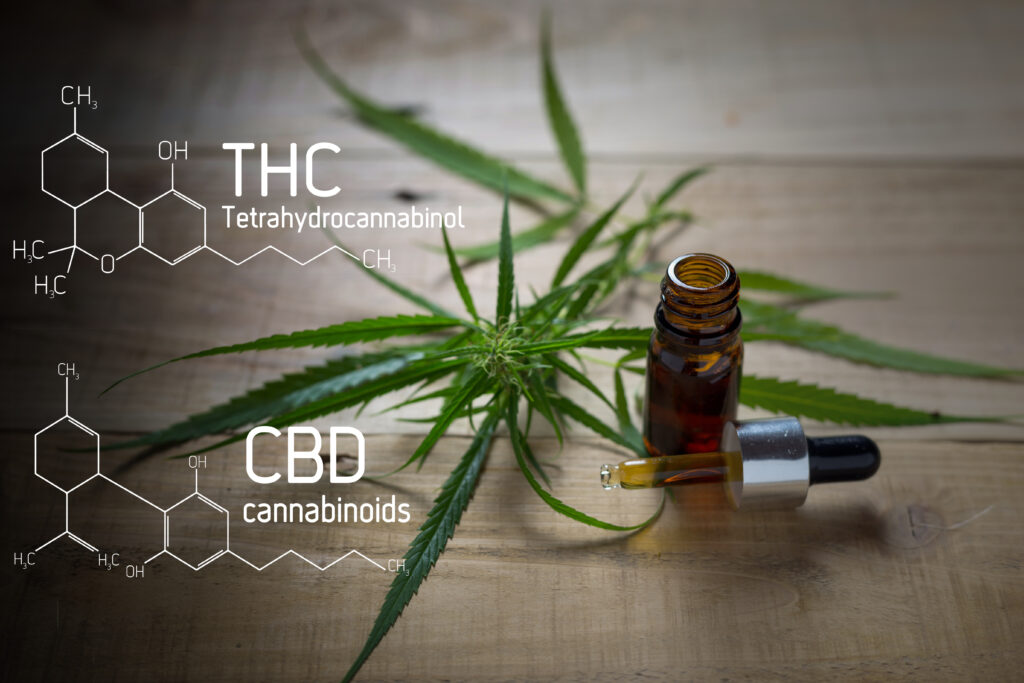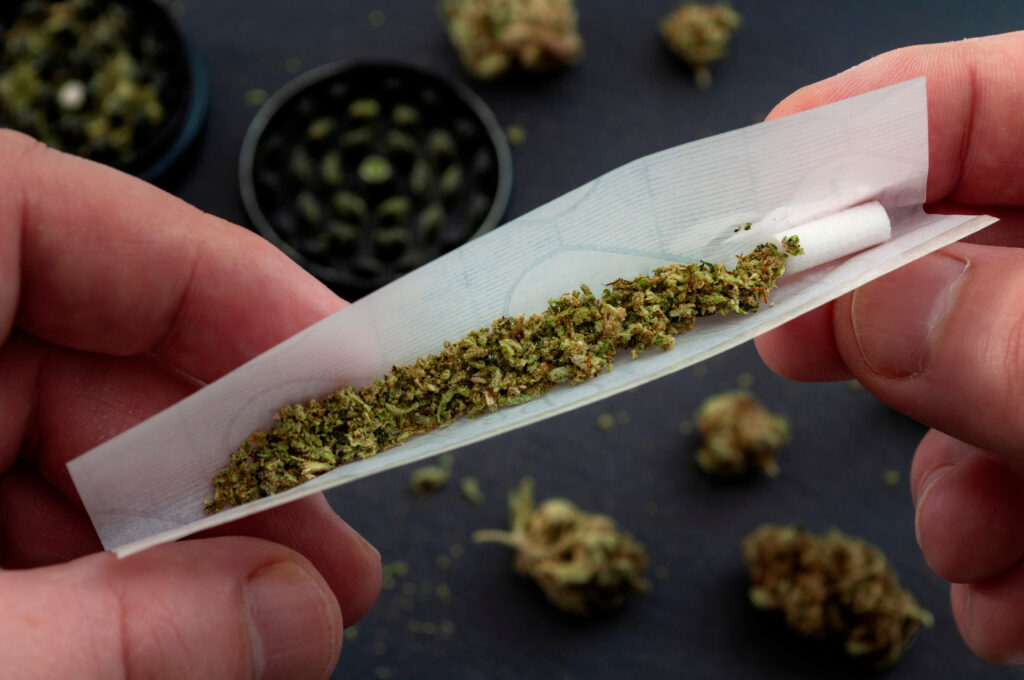Risks, Sources, and Pathways to Healing
In the heart of the Atlanta metro area, a silent epidemic is unfolding. Synthetic cannabinoids, often marketed as “K2,” “Spice,” or “herbal incense,” and synthetic cathinones, commonly called “bath salts,” have infiltrated communities, leaving a trail of medical emergencies, shattered lives, and unanswered questions.
These designer drugs engineered to mimic the effects of cannabis and stimulants are far more dangerous than their natural counterparts, with unpredictable chemical compositions that pose severe risks to physical and mental health.
Atlanta’s role as a transportation hub and its thriving retail landscape have made it a hotspot for these synthetic drugs, which are readily available in gas stations, online marketplaces, and even residential neighborhoods.
We will take a look at the devastating health impacts of synthetic cannabinoids and cathinones, trace their distribution networks in our city, and offer hope through evidence-based recovery strategies tailored for Atlantans.

The Chemical Deception: What Are Synthetic Cannabinoids and Cathinones?
Understanding synthetic cannabinoids and cathinones’ chemical structures and physiological impacts is crucial for recognizing the dangers posed by their recreational use and the challenges they present for regulation and public health.
Synthetic Cannabinoids: A Dangerous Imitation
Synthetic cannabinoids are laboratory-made chemicals sprayed onto dried plant material to mimic tetrahydrocannabinol (THC), the active compound in cannabis.
However, these compounds function as cannabinoid receptor agonists that bind to the brain’s cannabinoid receptors 100 times more intensely than natural THC.
While some users seek “legal highs,” the reality is grim: batches often contain multiple synthetic chemicals with adverse effects ranging from agitation and psychosis to kidney failure and tachycardia.
In 2022, Gwinnett County law enforcement seized products like JWH compounds from local distributors, highlighting the blurred line between legal hemp derivatives and illicit synthetic cannabinoid blends.
These new psychoactive substances (NPS) are constantly evolving to circumvent legal restrictions. When one chemical structure is banned, manufacturers alter the molecular arrangement slightly to create a “new” product that falls outside existing laws.
This cat-and-mouse game between regulators and manufacturers creates enormous challenges for law enforcement and healthcare providers attempting to address the public health crisis.
Synthetic Cathinones: Stimulants in Disguise
Synthetic cathinones, sold as “bath salts” or “plant food,” are chemically akin to amphetamine and methamphetamine but often 10 times more potent than cocaine.
These compounds are human-made stimulants related to cathinone, a substance found in the khat plant native to East Africa and Arabia. Compounds like MDPV (3,4-methylenedioxypyrovalerone), mephedrone (4-methylmethcathinone), and methylone disrupt dopamine and norepinephrine pathways, triggering paranoia, violent behavior, and hyperthermia.
A 2011 National Drug Intelligence Center report warned that these illicit drugs were flooding U.S. drug markets through online sales and local retailers—a trend that persists in Atlanta today.
Unlike traditional psychostimulants with well-documented effects, synthetic cathinones produce unpredictable reactions that can vary wildly from one batch to another. Users never genuinely know what they’re consuming, making each ingestion potentially life-threatening.
The marketing of these substances as “bath salts” with labels stating “not for human consumption” creates a dangerous facade of legitimacy while allowing manufacturers to evade regulatory oversight.
Health Impacts: Why These Synthetic Drugs Are More Dangerous Than They Seem
Synthetic drugs can have severe and unpredictable health impacts, often far more dangerous than users realize. These substances can lead to immediate adverse effects such as acute intoxication, psychological disturbances, and, in severe cases, death due to overdose.
Physical and Psychological Toxicity
Synthetic Cannabinoids:
- Cardiovascular Effects: Tachycardia, hypertension, chest pain, and arrhythmias.
- Neurological Damage: Seizures, stroke, and long-term central nervous system impairments.
- Psychiatric Symptoms: Paranoia, hallucinations, and suicidal ideation—effects that linger even after cessation.
In 2017, a CDC-led toxicology investigation linked synthetic cannabinoid use in Illinois and Georgia to life-threatening bleeding disorders caused by contaminants.
The increasing potency of synthetic cannabinoids has led to a surge in emergency department visits across Atlanta, with Grady Memorial Hospital reporting a 300% increase in synthetic cannabinoid-related admissions between 2019 and 2022.
Medical professionals note that synthetic cannabinoid use can cause respiratory depression, rhabdomyolysis, and acute intoxication, leading to sudden cardiac death—risks not typically associated with natural cannabis.
The unpredictable pharmacological profile of these substances means that even experienced users can easily overdose, as potency can vary dramatically between batches or even within the same plant material.
Synthetic Cathinones:
- Excited Delirium: Extreme agitation, elevated blood pressure, and muscle breakdown.
- Risky Behaviors: Increased libido paired with impaired judgment, raising HIV transmission risks.
- Overdose Fatalities: Deaths often result from hyperthermia or kidney failure, as seen in cases reported to Georgia poison centers.
A 2022 systematic review noted that 69% of synthetic cathinone users met the criteria for substance use disorders—a rate higher than cocaine or methamphetamine. The addiction potential of these bath salts is particularly alarming given their relative affordability and accessibility compared to traditional drugs of abuse.

Long-term Neurological Consequences
Research from Emory University’s Department of Psychiatry has documented significant long-term changes in brain function following regular synthetic cannabinoid use.
These changes include alterations in the endocannabinoid system, which regulates mood, memory, and pain perception. Unlike natural cannabis, which produces temporary effects, synthetic versions can cause permanent receptor damage and lasting cognitive deficits.
Similarly, synthetic cathinones appear to cause more severe neurotoxicity than traditional amphetamines. Animal studies conducted at Georgia State University demonstrate that MDPV exposure leads to dramatic depletion of serotonin transporters in the brain—potentially explaining the severe depression and suicidal ideation reported by many recovering users.
The toxicology profile more closely resembles MDMA than other stimulants, yet with significantly higher risks.
Impact on Mental Health Services
Atlanta’s psychiatry infrastructure is struggling under the weight of this crisis. Psychiatric units report being overwhelmed with admissions related to synthetic drug-induced psychosis, which often requires longer hospitalization and more intensive intervention than other substance-related disorders.
Many facilities lack the specialized training needed to address the unique challenges presented by these newer psychoactive substances.
The mental health consequences extend beyond the immediate effects. Anxiety-like behaviors during abstinence from synthetic stimulants can persist for months, complicating recovery efforts and increasing relapse risk.
Traditional addiction treatment protocols often prove inadequate for these NPS, necessitating innovative approaches to psychopharmacology and therapy.
Atlanta’s Distribution Network: Where Are These Drugs Coming From?
The distribution of drugs emerges as a pressing issue intertwined with the city’s infrastructure and socio-economic landscape.
Renowned for its strategic location, Atlanta is a critical junction for transportation networks that facilitate legal and illegal activities.
Retail Availability
Despite efforts by the Drug Enforcement Administration, synthetic drugs remain accessible through:
- Gas Stations and Convenience Stores: Products like “herbal incense” are sold under false pretenses.
- Online Drug Markets: Cryptic listings on global platforms ship directly to Atlanta homes, evading detection with labels like “not for human consumption.”
- Vape Shops: These establishments frequently sell synthetic cannabinoids disguised as legal hemp products, creating confusion for consumers who may not realize they’re purchasing dangerous synthetics rather than natural CBD products.
Local Manufacturing
Law enforcement raids in Chamblee and Roswell uncovered equipment used to produce synthetic cannabinoids, highlighting small-scale local operations.
Meanwhile, international suppliers exploit Atlanta’s Hartsfield-Jackson Airport—a significant cargo hub—to smuggle raw chemicals from overseas.
The DEA’s Atlanta Division reports that many synthetic drugs arrive as precursor chemicals from laboratories in China and India. These chemicals are then processed and packaged in residential settings throughout metro Atlanta, making detection challenging and increasing contamination risks.
Unlike traditional drug production, synthetic cannabinoid manufacturing requires minimal equipment or expertise, enabling widespread small-scale operations that elude traditional enforcement methods.
The Online Marketplace
Digital platforms have revolutionized the distribution of synthetic drugs. Encrypted messaging apps, darknet markets, and mainstream social media platforms facilitate connections between sellers and buyers.
Transactions use cryptocurrency to maintain anonymity, while delivery services unwittingly transport these substances disguised as legitimate packages.
Atlanta’s tech-savvy population and its extensive logistics infrastructure create perfect conditions for this digital drug market to flourish.
Law enforcement struggles to keep pace with evolving technologies and shifting distribution methods, creating enforcement gaps that suppliers readily exploit.
Transportation and Trafficking
Atlanta’s “Gateway to the South” status makes it a prime distribution node. DEA reports trace synthetic drugs to various sources, and interstate shipments move through I-75 and I-85 corridors.
The city’s position as a transportation hub facilitates both the distribution and transshipment of synthetic substances throughout the Southeast.
The convergence of major highways, an international airport, and extensive freight rail makes Atlanta uniquely vulnerable to trafficking in illegal drugs.
Once synthetic cannabinoids and cathinones enter the city, they quickly disperse through established distribution networks that reach from affluent suburbs to economically disadvantaged urban centers.

Demographic Trends in Drug Use
- Youth and College Students: Atlanta college campus surveys indicate that 22% of undergraduates believe synthetic cannabinoids are “safer” than marijuana due to their legal status and availability.
- Vulnerable Populations: Homeless communities in Downtown Atlanta and marginalized groups disproportionately face addiction due to low-cost access. Outreach workers report synthetic cannabinoids selling for as little as $5 per gram in some areas—significantly cheaper than natural cannabis.
- Nightlife Scene: Attendees of electronic dance music venues report higher rates of NPS use, including synthetic cathinones like mephedrone, often consumed in combination with other recreational drugs such as MDMA, LSD, or benzodiazepines, multiplying health risks.
Prevalence and Cultural Influences
Atlanta’s entertainment industry sometimes normalizes recreational drug use, creating an environment where experimentation with NPS becomes part of social scenes.
The prevalence of synthetic cannabinoids in specific communities is significantly higher than reported in national surveys, creating localized hotspots of use and related health problems.
Additionally, Atlanta’s significant income disparities create distinct patterns of synthetic drug use. In lower-income communities, synthetic cannabinoids offer an affordable alternative to marijuana, while in more affluent areas, synthetic cathinones like mephedrone circulate primarily in nightlife settings as “club drugs.”
These divergent patterns necessitate targeted prevention strategies that address each community’s specific risk factors.
Toxicology Challenges in Detection and Monitoring
Standard drug test procedures often fail to detect synthetic cannabinoids and cathinones, creating significant challenges for healthcare providers, employers, and monitoring programs.
Traditional toxicology screens designed for cannabis, opioids, and common stimulants cannot identify these novel compounds, creating a dangerous blind spot in public health surveillance.
This detection gap allows users to evade positive drug tests while still experiencing severe impairment.
This presents a critical challenge for probation departments, treatment programs, and workplace safety initiatives: how to monitor and prevent the use of substances that evade standard detection methods.
To address this, Atlanta hospitals have begun implementing advanced toxicological testing methods in cases of suspected synthetic drug intoxication.
Legal Loopholes
Georgia’s 2023 court ruling on hemp-derived products created confusion, allowing synthetic blends to thrive in a regulatory gray area. Retailers will continue exploiting ambiguities until lawmakers close gaps in controlled substance laws.
The rapid evolution of synthetic formulations consistently outpaces legislative responses, creating persistent regulatory challenges.
Law enforcement officials express frustration with current laws that fail to address the full spectrum of synthetic compounds. By the time specific chemicals are scheduled as controlled substances, manufacturers have already moved to new formulations that fall outside existing regulations.
This legal cat-and-mouse game leaves communities vulnerable and compounds the enforcement challenge.
The Summit Wellness Group’s Approach
The synthetic drug crisis demands urgency. The Summit Wellness Group offers same-day admissions and various payment options if you or a loved one is struggling.
Our Midtown center has helped hundreds of Atlantans rebuild their lives through science-backed therapies and compassionate care.
Visit one of our Atlanta rehab centers or call (770) 299-1677 to speak with us. Together, we can help you reclaim life from the grip of these substances.
